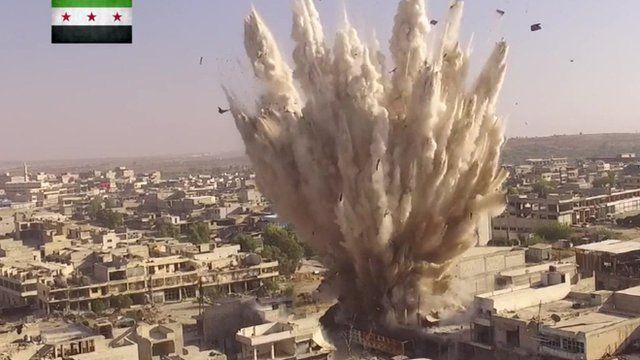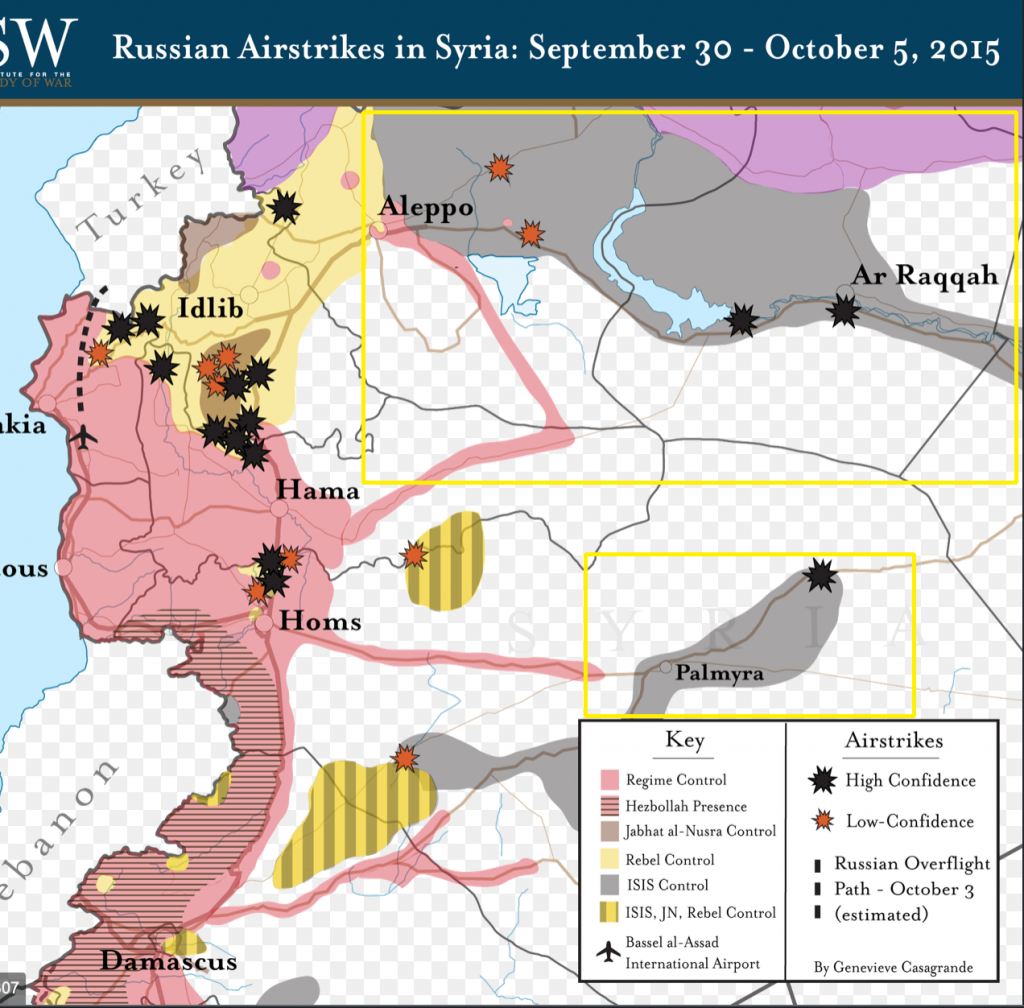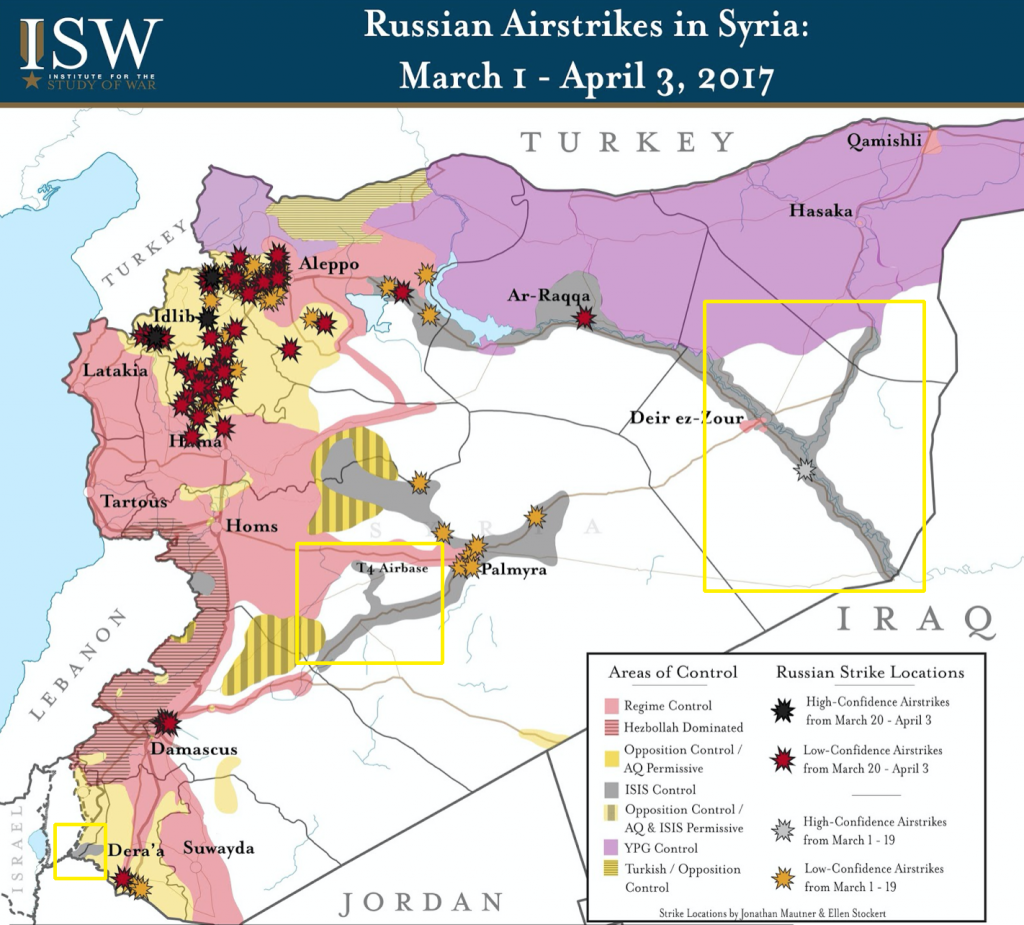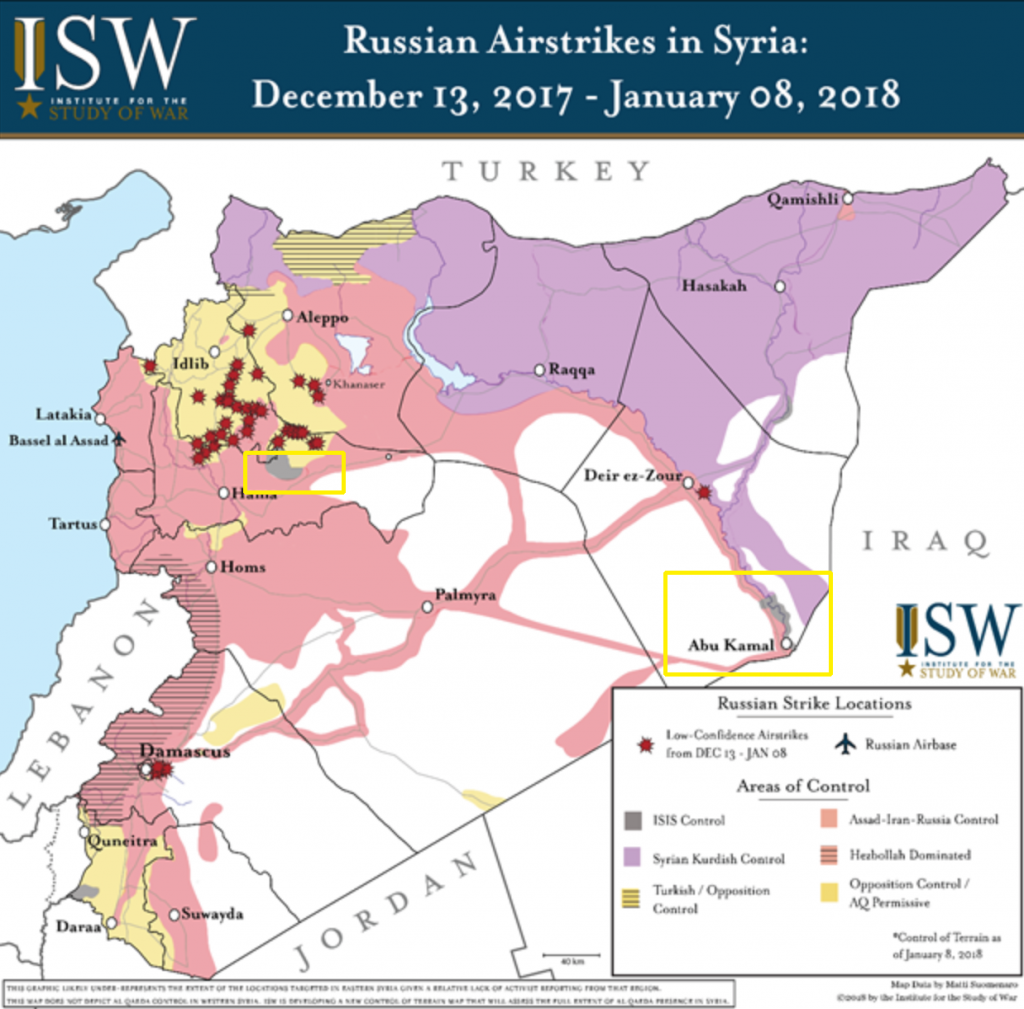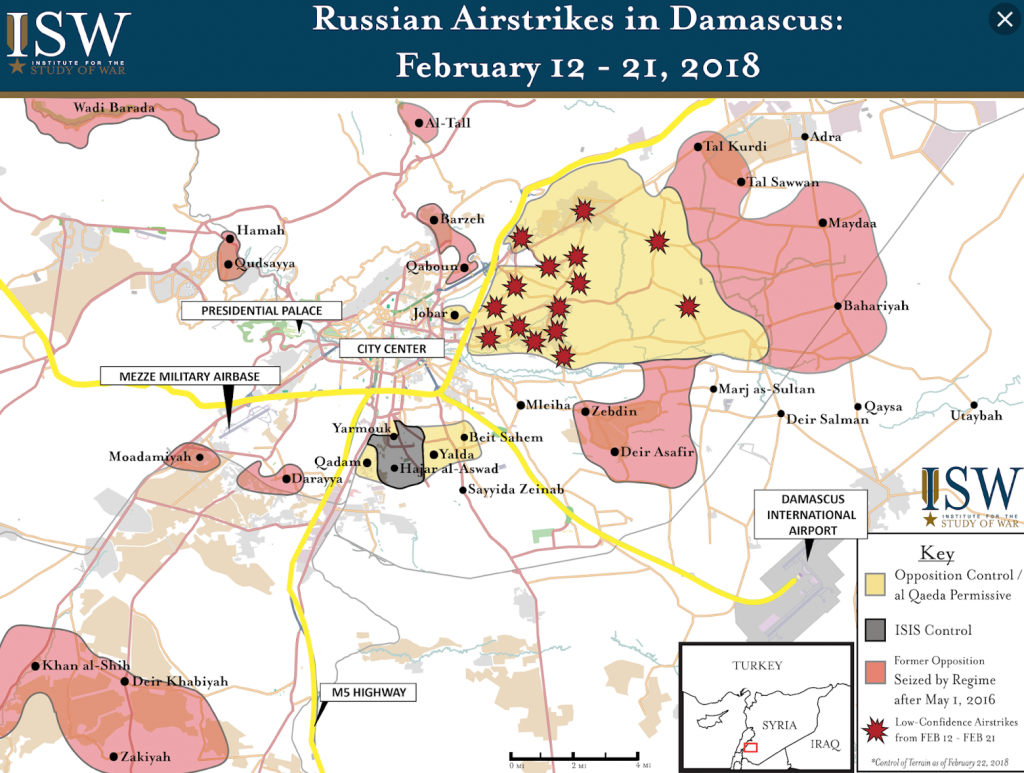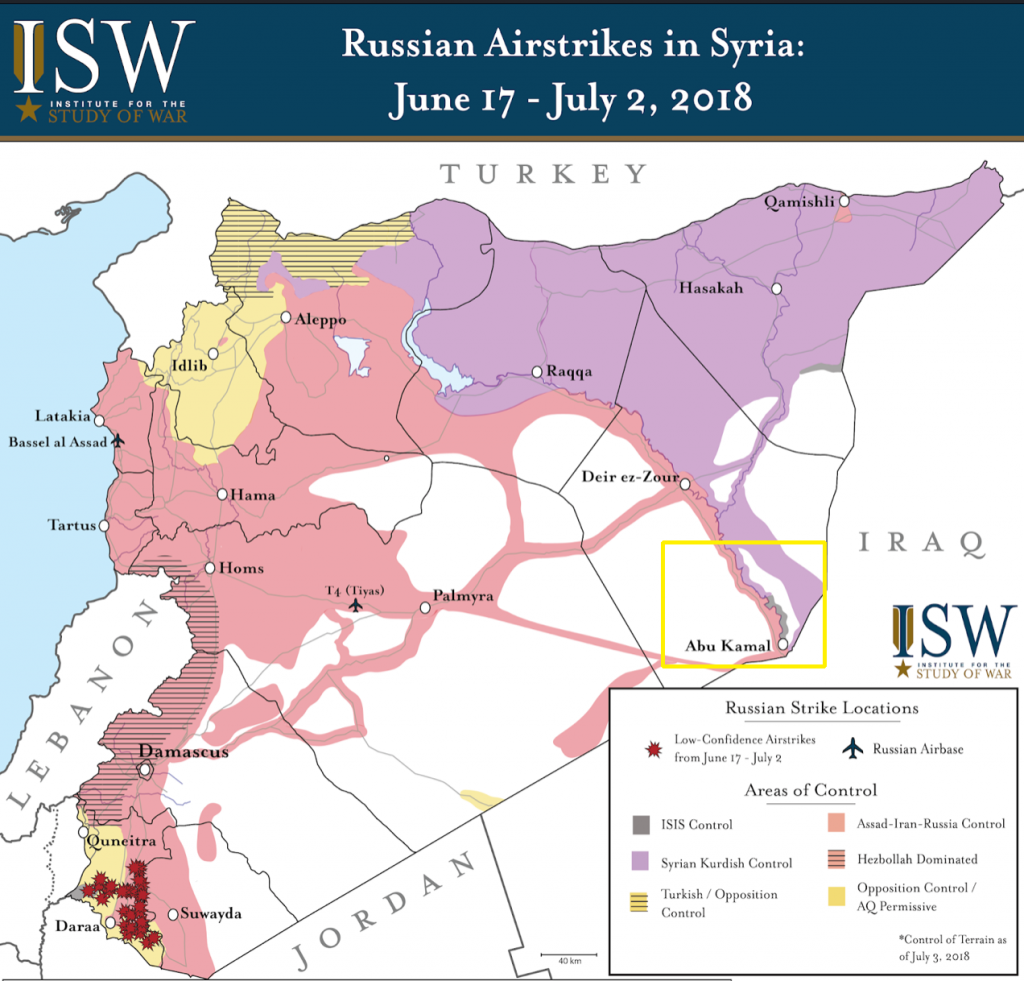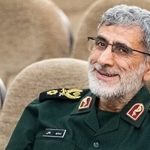Analyzing the Russian military campaign in Syria it can be suggested that the fight against the IS was not Russia’s key target in Syria within 2015-2019. Attacks on the IS terrorists were a side task in the context of measures to extract radical Muslims from Russia’s territory to Syria and eliminate them by the local coalition forces.
In its public messaging, the Russian government has focused almost exclusively on the Islamic State and President Putin appears eager to present himself as “fighter on terror.”
The analysis involves the ISW data of Russian aviation airstrikes in the period of 2015-2018, as it more complete and detailed documented the chronology and location of military operations. The results of the analysis indicate that civilian targets located on the opposition forces-held territories, mainly in Homs and Idlib Provinces, were primary targets. At least, as the ISW data shows, high-intensity airstrikes did not target the IS facilities.
The Russian strikes targeted areas significantly west of Islamic State strongholds in Syria.
In 2016 Russian airstrikes continue to primarily target Syrian opposition groups throughout northwestern Syria, including areas along the Turkish border in northern Latakia Province.
In 2015 Russian airstrikes primarily target Syrian opposition groups in areas far from ISIS’s core terrain. These strikes are concentrated in northwestern Syria, particularly in rebel-held areas of Idlib Province and the northern countryside of Hama Province. The Russian air campaign in Syria appears to be largely focused on supporting the Syrian regime and its fight against the Syrian opposition, rather than combating ISIS.
Russia bombed ISIS only as part of a larger effort to carve out a sphere of influence in Syria.
The IS lost control territory in Syria and Iraq quickly; attacks on the territories controlled by the IS were mainly made on the means of communication rather than terrorist-concentrated places. Thus, Russia’s attacks on the IS in Syria should be considered rather as part of a strategy to expand its control zone than a tool in the fight against terrorism. Russian aviation targeted the IS facilities at the time when there was a threat of terrorists attacking the government forces and increasing the control territory. Russia’s unwillingness to cooperate with the American coalition dragged on the process to eliminate the IS and led to increase of the civilian casualties number. This result was also caused by the Kremlin’s use of development weapon and new aviation use experiment in urban warfare.
At the same time, a high concentration of airstrikes on civilian facilities was aimed at stimulating mass migration from these regions. This tactic was purposed to deprive the opposition forces of the resource base and operational support. Since the Syrian opposition forces are formed from the local population rather than foreign fighters, Russia has chosen the tactics to destroy the civilians living in the opposition regions in order to break down the resistance of the rebel units associated with the civilian population.
Hospitals, market places, schools and centers for the displaced have been systematically targeted in towns and cities that remain in opposition hands. UN agencies and NGOs say at least two dozen hospitals and medical clinics have been destroyed by airstrikes, some hit multiple times until treating patients became impossible.
Mass migration from the Middle East to Europe is one of the components of hybrid warfare. The flow of refugees from Syria within 2014-2017 period was provoked by Russia’s aviation operations rather than by internal processes in Syria.
Comparing the data on the number of refugees from Syria in a temporary context it can be suggested that the aviation tactics use in the Syrian military campaign has played a key role in mass migration.


